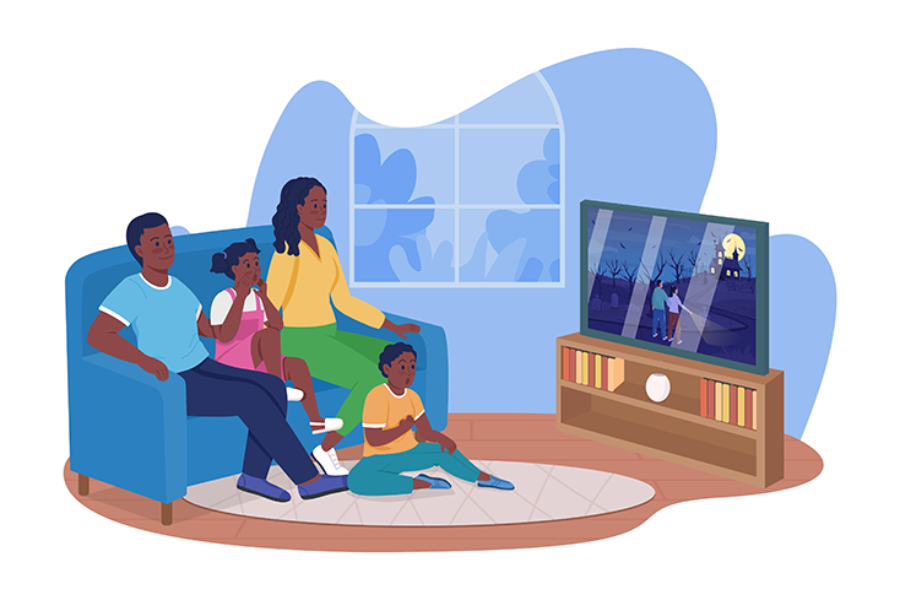By Ginger Robertson
The television screen goes dark, then flashes red. There’s a scream. Broken glass. Laughter. Then, the image returns. A nurse prepares a syringe. A man in a straitjacket talks to himself, responding to apparent voices in his head. The background music crescendos dramatically. The man talks faster and begins twitching. The nurse walks faster. Her white heels click on the shining floor. A team of Hollywood creatives has achieved their goal by inspiring fear in me — and likely, many other viewers — thanks to their use of the antiquated trope of a scary and abusive psychiatric ward.
With so many movies to choose from, psychiatric hospital horror is its own genre of film. Perhaps you’ve been terrified by scenes from classic films like “Clockwork Orange” or “Asylum,” 2000s movies like “Shutter Island” or “Insanitarium,”and even newer films like “Unsane,” or “Gonjiam: Haunted Asylum.” These films (some of which have received critical acclaim) have certainly elevated the thriller/horror genre. But they go beyond telling a gripping story; they perpetuate negative stereotypes about treatment centers and the patients who seek care there. Because most people don’t encounter real psychiatric units, these on-screen depictions may be the only representation of psychiatric treatment audiences will ever see.
Unsurprisingly, then, our first associations with inpatient psychiatric treatment are danger, unlivable conditions, unpredictability and even abuse. As a result, those needing inpatient treatment are hesitant (and often quite resistant) to entering a facility. Loved ones are often scared to visit. And, ultimately, people who have taken the steps to get help and recover rarely admit to having spent time in an inpatient facility. Spending time in a psych ward is taboo, and the decision to get help is understood as a dirty secret rather than a sometimes-necessary step toward recovery.
The Reality Of Inpatient Treatment
To dismantle the stigma surrounding hospitalization and psychiatric treatment, it’s important to share the truth about the experience. If we can be transparent about how inpatient treatment works — and what a potential stay might look like — we can start to challenge the terrorizing depictions on our screens.
The space looks “normal”
Psychiatric units actually look similar to the other units in a hospital. Patients typically have their own rooms, which are well lit (and not victim to flickering lights and disconcerting shadows). Equipment is well-maintained by an entire team of operational engineers, and the space is kept clean by hard-working facility staff.
The few differences that you will notice between a “standard” hospital room and a psychiatric patient’s room are for safety measures. A psychiatric patient room often has plastic furniture, no strings on window blinds and cabinets are locked along with entry to the unit. These are not punitive measures; they are protective to prevent patient self-harm as the patient gets through the current psychiatric crisis they are experiencing.
The unit — and the patients — aren’t “haunted”
Unlike the convincing silver screen depictions, psychiatric units also are not areas of murder mystery or ghost inhabitation. Of course, the floors are not haunted by ghosts of past patients, and patients are not “possessed.” While some may experience auditory or visual hallucinations, they are not dangerous or a threat to fellow patients. In fact, many patients are able to connect with one another and find community during their time in treatment.
Patients are given safe and closely monitored treatment
In most cases, psychiatric patients are treated much like any other medical patients — and standards of care have been raised significantly in the last three decades to offer a safer and less threatening environment than the images in pop culture.
Staff are trained to keep patients safe from harming themselves and others, and there are firm laws about restraining patients against their will. These units of the hospital are monitored by health care organizations, such as the Joint Commission on Accreditation of Healthcare Organizations, just like the rest of the hospital is. Medications and therapy are provided per rigorously researched guidelines under strict monitoring with the intent to improve the quality of life for the patient.
Patients get clean clothes, hygiene products, laundered sheets and three meals a day (plus snacks). There is usually an activity room within the psychiatric unit that provides coloring books, colors, novels, puzzles, movies to watch and board games. They are treated as humans and unique individuals, as they should be.
Why Accurate Representation Matters
As many movie buffs have asked, “so, what?” Horror movies are made for the purpose of entertainment — just a thrilling escape from reality that people enjoy. Everyone knows that the tortured and possessed patients are made-up characters in a fictionalized world. However, the lived experience of mental illness and seeking treatment is not so simple. While audiences can acknowledge that these cinematic worlds aren’t real, they still fail to separate the negative associations from people with mental illness.
Those experiencing mental health crises still hear stigmatizing language and painful labels: “crazy,” “psycho,” “nuts,” “insane” — even “possessed.” Naturally, no one wants to be called these names or have this judgment cast upon them.
So, those who need help may avoid it. They don’t go to treatment. They don’t get the help they need, and they get worse. Often, this culminates in patients being forced into hospitalization. Then, after doing the work to find recovery, they will keep their experience a secret. Seeking treatment and finding recovery becomes a skeleton in the closet. But ultimately, a support system is vital to any type of healing.
To have a support system, you have to say you need support. Many patients close off further; they shrink their support systems rather than growing and strengthening them — all because of public perception, a perception propagated by the antiquated trope of the “scary” mental health ward.
That’s why it matters. Public perception matters. Public perception influences people’s opinions of who they are and what they “should” do. Accurate representations of psychiatric units in movies and television could be a positive influence for people to get the help they need and deserve.
Ginger Robertson is a registered nurse and mental health blogger. She hopes her work can end the stigma surrounding mental illness and seeking mental health care.
Source: https://nami.org/Blogs/NAMI-Blog/April-2022/Inpatient-Psych-Care-What-Movies-Get-Wrong-and-Why-It-Matters




